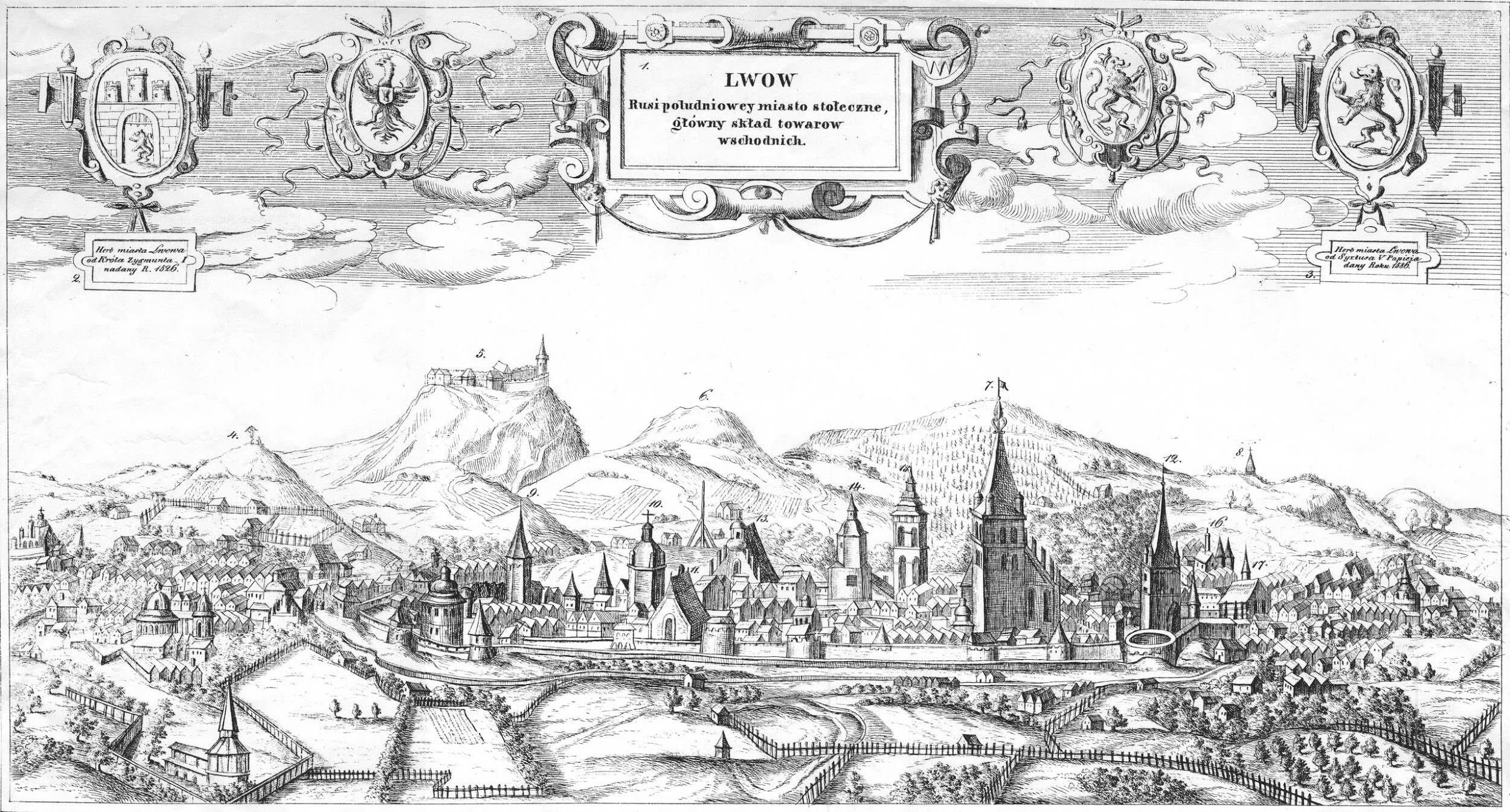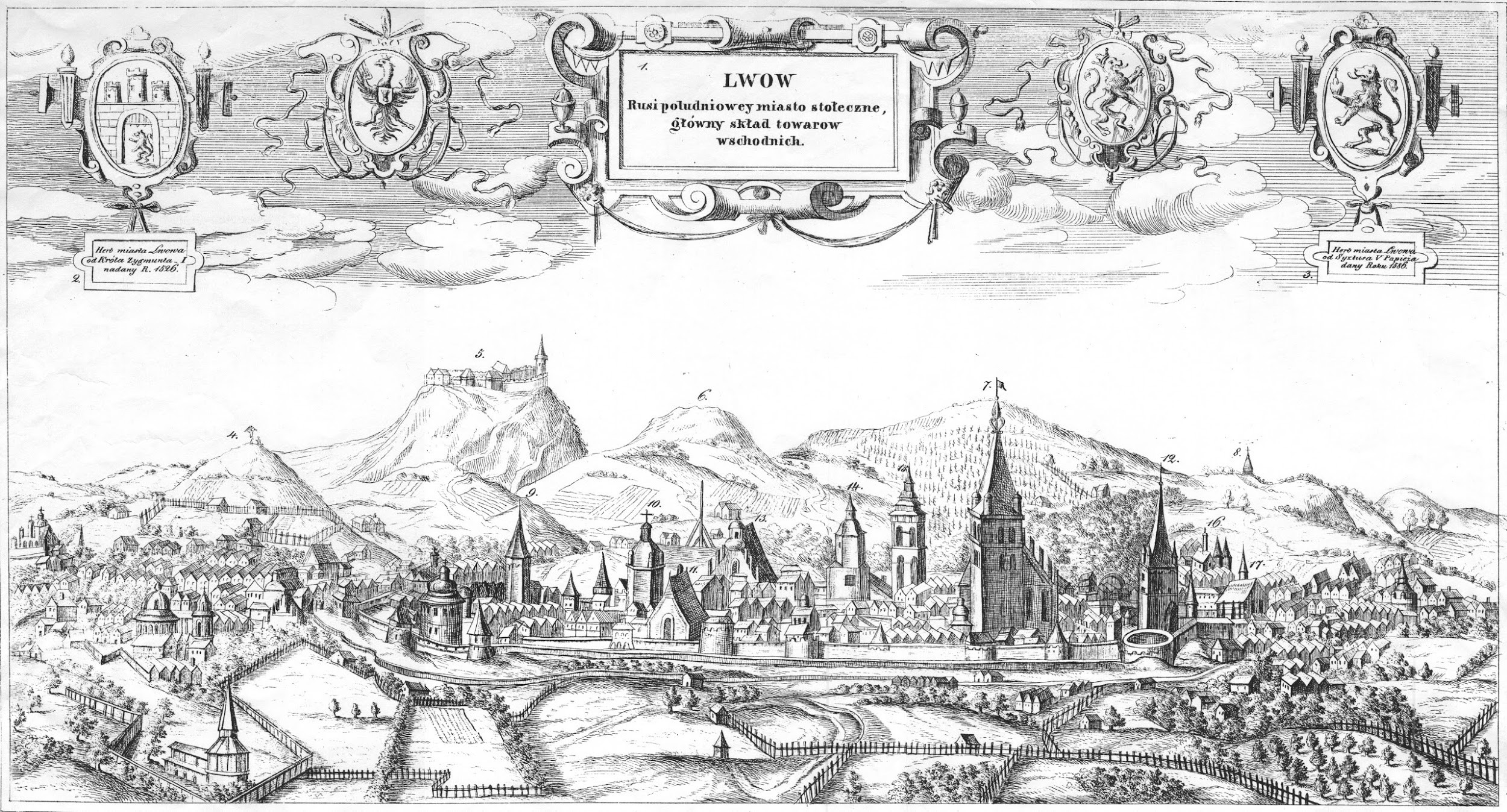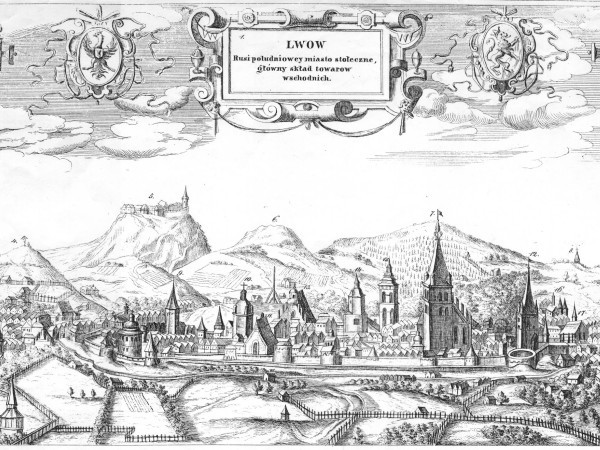
Lviv was founded during the reign of Danylo Romanovych. It is named after his son - Prince Lev. The first mention of the city dates from 1256.
In the middle of the XIV century the city was conquered by Casimir III, thus Lviv became part of the Kingdom of Poland (later the Commonwealth) for more than 400 years. More and more people of different nationalities, including merchants and artisans arrived to Lviv.
In 1356 Casimir III granted to the city all privileges of Magdeburg law. Subsequently, Catholics (the privileged population of Germans and Poles), Ruthenians, Armenians and Jews formed their national communities and quarters.
The population of the multinational city was about 5000 people. There were more than 10 workshops operating and new trade agreements were concluded in the city.
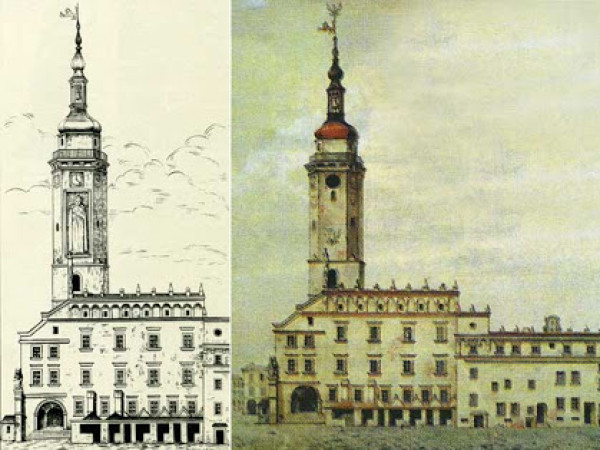
Due to the Great Fire in 1527, the face of medieval Lviv was almost completely destroyed. Subsequently, according to the projects of Italian architects, the destroyed Gothic city took on the new Renaissance appearance.
In addition to the dynamic changes of the appearance of the city center, with the assistance of Catholic, Greek-Catholic and Orthodox orders, many monasteries were established around the defensive walls and became an integral part of the medieval city life.
The field of science and education was constantly developing in the city. Thanks to the activities of church organizations - the Lviv Brotherhood School and the Lviv Jesuit College (later the academy, which became a university) many valuable museum pieces were collected and they began to print books in Cyrillic and Latin.

In the middle of the XVII century in the city were formed more than 30 artisan workshops and the population was about 25,000 people of different nationalities.The walls of Lviv withstood the siege of Cossack, Turkish and Moscow troops, but the city was stormed by the Swedish army of Charles XII in 1704.
As a result of the first division of the Commonwealth in 1772, Lviv came under power of the Austrian crown and soon became the capital of the province of the Kingdom of Galicia and Lodomeria.
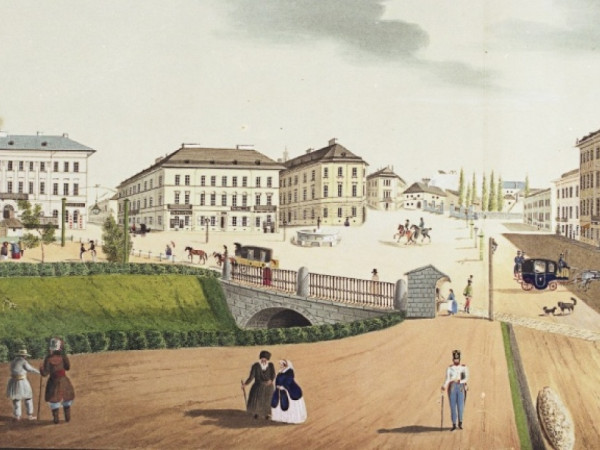
In accordance with ideas of Enlightenment and Austrian secularization reform the city has changed significantly. The medieval walls were dismantled and new streets were laid in their place.
By order of the emperor, many monasteries and churches were converted into government premises (customs, prison, library, etc). Around the old Lviv, a new Austrian classicist-style building appeared. The national communities of the city were in equal legal position during the Austrian period.
In the 1848, a "Spring of Nations" revolution broke out in European states, which gave impetus to representatives of different national communities in Lviv, to start protests against the Austrian authorities. The events led to the democratization of social life and the development of national and cultural movements. In the second half of the XIX century the city is experiencing an economic and cultural boom.
Due to the discovery of petroleum fields in Galicia and development of many enterprises Lviv become an important financial center. As a result, in 1861 the first railway line of Ukraine was connecting two cities - Lviv and Przemysl.
At the turn of the XIX and XX centuries new government and financial institutions are emerging around the Austrian Corso: the Galicia Sejm building, the Railway Board Directorate, the Galician Savings Bank, the Lviv branch of the Prague Credit Bank and other administrative and office buildings of the historicist era. The Galician Regional Exhibition in 1894 marked the golden age of the region, at that time the first electric tram line was laid in the city.
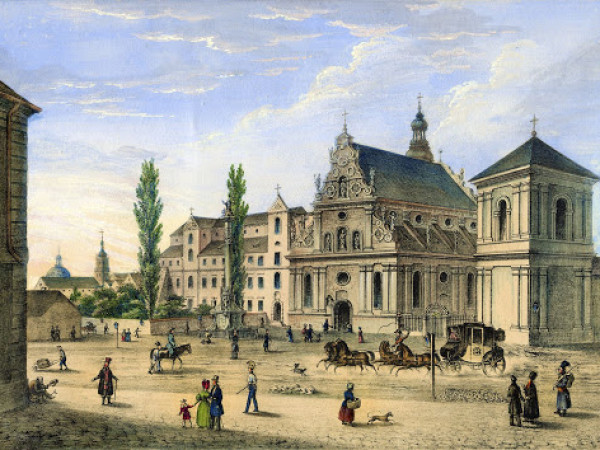
Along with the economic boom in the city, there was a cultural progression. On the vault of the Poltva river - the site where today Liberty Avenue is located, the new city center was completed with the buildings of the Opera House and the National Museum.
A wide secession building has arisen around the new center. It was the result of the rapid political, economic and cultural development in the significant city of the Austro-Hungarian Empire.
However, that increasing step of progress was interrupted by the outbreak of the First World War.
